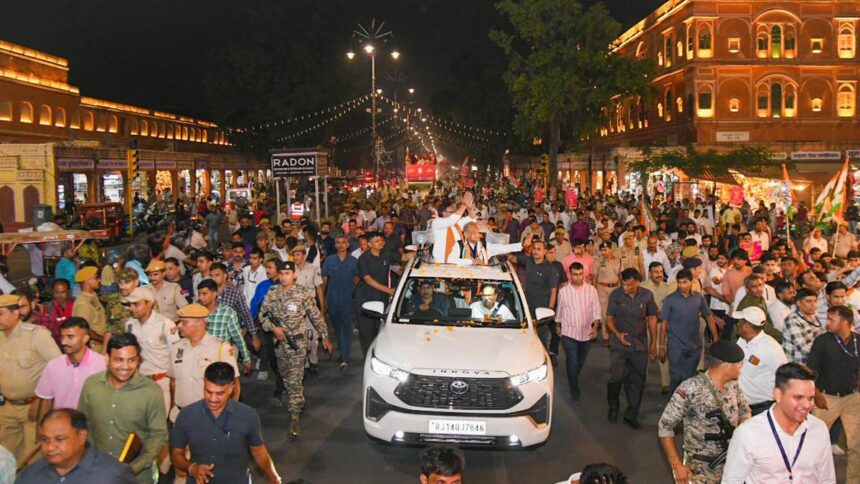Rajasthan Chief Minister Ashok Gehlot addressed a public meeting in Jaipur on November 7, 2023, as part of the campaign for the upcoming Assembly elections scheduled for November 25. A detailed analysis of economic, social, and environmental indicators for Rajasthan reveals notable progress in some areas while continued challenges remain.
According to recent data comparing Rajasthan to other states, social indicators show improvement from 2015-16 to 2019-21, although the state still trails in various aspects. For example, Rajasthan recorded 16.8% of children classified as wasted (low weight-for-height) in 2019-21, placing it 13th among 30 states. For comparison, the top states were Punjab at 10.6%, Haryana at 11.5%, and Uttarakhand at 13.2%. This represents an eleven-spot improvement from its 2015-16 rank of 24th.
Significant advancements have been observed in some social measures. The percentage of households with at least one member covered by a health insurance or financing scheme surged from 18.7% in 2015-16 to 87.8% in 2019-21, elevating Rajasthan to the top rank from 18th. Furthermore, the state’s Infant Mortality Rate ranking improved from 24th to 17th among 30 states, and the share of stunted children improved from 25th to 16th.
Despite these advancements, Rajasthan continues to lag in several areas, particularly concerning women’s empowerment. The percentage of women aged 6 and above who have attended school remains at 63.5%, ranking 28th out of 30 states. Additionally, over 25% of women aged 20-24 were married before the age of 18, resulting in a 24th place rank out of 40 states. The state’s performance on women’s education has shown little improvement since 2005-06.
In terms of the Human Development Index (HDI), Rajasthan has progressed by seven spots, moving from 27th to 20th between 1990 and 2021. Economic performance indicators show Rajasthan as having a middling economy, with a slight improvement from 20th to 18th place between 1993-94 and 2021-22. Currently, more than 40% of the population falls within the lowest two wealth quintiles.
The manufacturing sector in Rajasthan employs approximately 10% of the workforce and contributes about 7.5% to the total Gross Value Added, placing the state in the lower half of rankings for both measures.
Educational indicators reflect mixed results. In terms of the average annual dropout rate at the secondary level (grades 9-10) and the Gross Enrollment Ratio in higher secondary (grades 11-12), Rajasthan ranks in the upper half, while it falls in the bottom half for the Adjusted Net Enrollment Ratio in elementary education (grades 1-8) and the Gross Enrollment Ratio in higher education (ages 18-23).
Environmental indicators also show a varied performance; while the state produces a relatively low amount of plastic waste and ranks in the top half nationally, it generates a higher amount of hazardous waste, placing it in the bottom half of rankings for that category.
The data is sourced from the National Family Health Surveys, Global Data Lab, and NITI Aayog.










